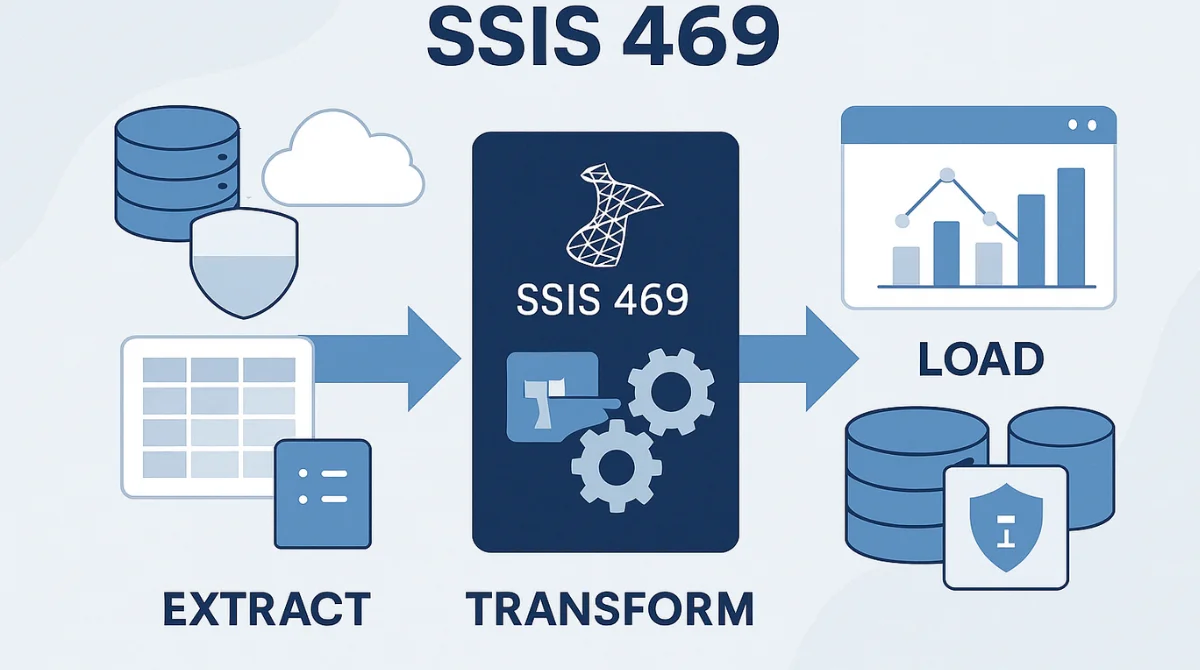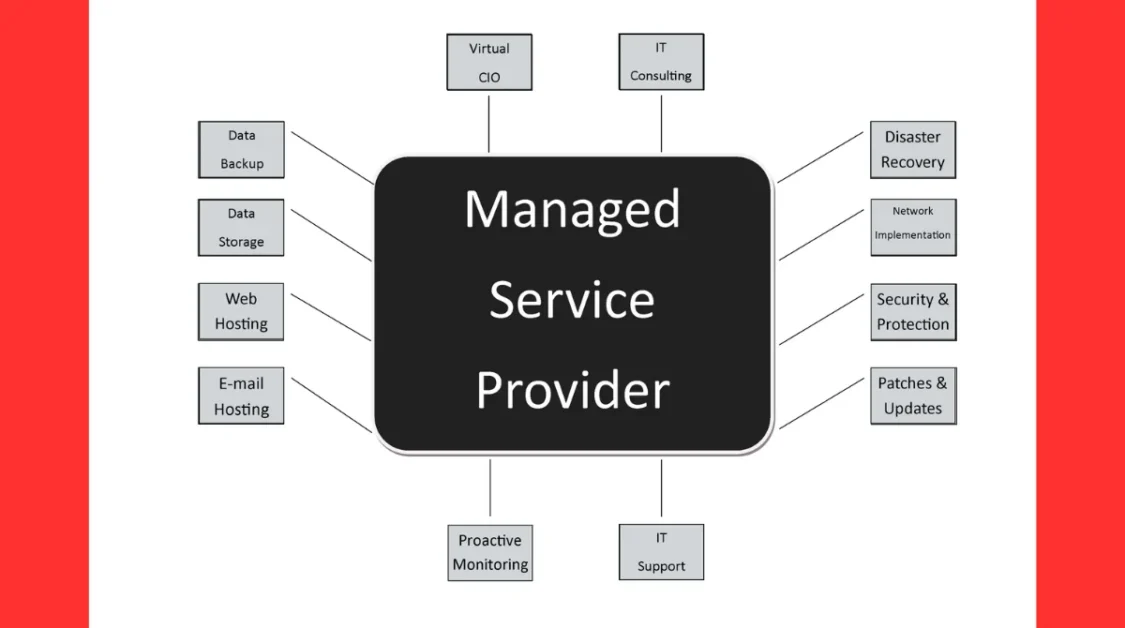In today’s data-driven world, efficient data integration is crucial for businesses to make informed decisions. SQL Server Integration Services (SSIS) 469 is a powerful tool that simplifies the process of extracting, transforming, and loading (ETL) data from various sources. A Comprehensive Guide to SSIS 469: Optimize Your Data Integration Process.
Understanding SSIS 469
SSIS 469 is an advanced version of Microsoft’s data integration platform, designed to handle complex ETL tasks with ease. It offers a user-friendly interface, robust performance, and seamless integration with various data sources, making it an ideal choice for organizations aiming to streamline their data processes.
Key Features
Enhanced Data Flow Components
SSIS 469 introduces improved data flow components that facilitate efficient data extraction, transformation, and loading. These enhancements lead to optimized performance, reduced latency, and better error handling capabilities, ensuring robust data integration workflows.
Advanced Integration Capabilities
With SSIS 469, users can seamlessly connect to a wide range of data sources, including relational databases, cloud services, and flat files. The platform offers built-in connectors for popular data platforms like SQL Server, Oracle, and Hadoop, as well as the option to create custom connectors for unique data sources.
Scalability and Flexibility
SSIS 469 is designed to handle large volumes of data efficiently, leveraging parallel processing techniques to enhance performance. It supports flexible deployment options, including on-premises, cloud, or hybrid models, allowing organizations to scale their data integration processes as needed.
Improved Performance with Data Flow Optimization
One of the standout features of SSIS 469 is its enhanced data flow performance. The update includes optimizations that allow for faster data processing and more efficient memory management, benefiting complex ETL operations and large datasets.
Advanced Debugging and Error Handling
SSIS 469 introduces more advanced debugging and error-handling options, simplifying troubleshooting for developers. Enhanced debugging capabilities make it easier to identify issues in data flows and control flows, with more detailed error messages and better diagnostics.
Support for JSON and XML Processing
With data formats becoming increasingly complex, SSIS 469 has expanded support for JSON and XML data processing. This allows developers to parse, transform, and integrate data in these formats more effectively, expanding the types of data SSIS can handle within an ETL pipeline.
User Interface Enhancements
Another noteworthy improvement is the updated SSIS user interface (UI), which now provides a more intuitive and user-friendly experience. The UI enhancements include streamlined navigation, improved layout of frequently-used tools, and customizable views, improving ease of use for both new and seasoned SSIS developers.
Practical Applications of SSIS 469

Business Intelligence (BI)
SSIS 469 is crucial for BI projects where data from various sources need to be integrated, cleaned, and loaded into data warehouses for analysis and reporting. Its enhanced performance and error handling capabilities make it ideal for such tasks.
Data Migration
Organizations often need to migrate data from legacy systems to modern platforms. SSIS 469 facilitates this process by ensuring data integrity and minimizing downtime during migration.
Real-time Data Integration
With the increasing demand for real-time data, SSIS 469’s performance optimizations are essential for applications that require immediate data processing and reporting.
Data Warehousing
Building and maintaining data warehouses require robust ETL tools. SSIS 469’s features support efficient data warehousing operations, ensuring that data is accurately integrated and readily available for analysis.
Best Practices for Utilizing SSIS 469
When working with SSIS 469, following some smart and proven methods can make a big difference. These best practices help you avoid common mistakes, improve performance, and maintain clean, secure, and reliable data workflows.
1. Plan Before You Build
Before jumping into creating packages, take some time to plan. Think about:
- What data you need
- Where it’s coming from
- Where it’s going
- What needs to happen to it in between
A clear roadmap helps avoid confusion later and keeps your package organized.
2. Keep It Simple
Don’t try to do too much in one SSIS package. Break your project into smaller, manageable packages. This way, if there’s an error, it’s easier to find and fix. Also, it’s easier to test and reuse small packages.
3. Use Configurations and Parameters
SSIS 469 lets you use parameters and config files to make your packages dynamic. Instead of hardcoding file paths, server names, or login info, store them in parameters or external config files. This helps when moving packages between environments (like from development to production) without making changes to the package itself.
4. Error Handling is a Must
Things go wrong sometimes. You need to catch those issues:
- Use error outputs in data flow tasks to capture rows that fail.
- Set up event handlers to log errors or send alerts.
- Create a logging system that tracks errors, warnings, and performance.
By setting up proper error handling, you’ll save hours of debugging later.
5. Logging and Monitoring
Enable logging to record:
- When a package starts and finishes
- How long tasks take
- Any warnings or errors
SSIS 469 allows custom logging options so you can choose exactly what gets tracked. This helps you spot performance problems or failures quickly.
6. Performance Tuning
Your packages should run fast and efficiently. Here’s how:
- Avoid unnecessary columns in your data flow.
- Use Fast Load options when writing to databases.
- Use blocking transformations (like Sort or Aggregate) only when needed—they slow things down.
- Run tasks in parallel where possible to speed up overall execution.
Monitor your packages and optimize bottlenecks for smoother performance.
7. Secure Your Data
SSIS 469 supports encryption and role-based access. Make sure:
- Passwords and sensitive data are encrypted in your packages.
- Only authorized users can open and edit packages.
- Data in motion (during transfer) is secure, especially when moving between servers.
Always follow your organization’s data security policies.
8. Use Source Control
Store your SSIS projects in a source control system like Git. This tracks changes, makes it easy to roll back mistakes, and helps when working with a team. You’ll know who changed what and when.
9. Test Thoroughly
Before moving your package to production:
- Test with different types of data (good and bad).
- Make sure your error handling works.
- Validate performance under load.
Testing ensures that everything works as expected, and avoids surprises later.
10. Document Everything
Keep documentation on:
- What your packages do
- How they’re configured
- What parameters they use
- Where logs and errors go
Good documentation helps other team members (and future you) understand and manage the system.
11. Schedule and Automate
Use SQL Server Agent or another scheduler to run packages automatically. Set up alerts for success or failure. This way, your data flows run on time and you’re notified if anything goes wrong.
12. Regularly Update and Maintain
Technology changes. Make sure you:
- Keep SSIS and SQL Server updated
- Review your packages regularly to improve them
- Check logs for signs of problems
This keeps your integration processes healthy and efficient over time.
Performance Tuning in SSIS 469
Achieving optimal performance in SSIS 469 involves careful tuning of various components:
- Adjust Buffer Settings: Configure Data Flow Task properties like AutoAdjustBufferSize, DefaultBufferMaxRows, and DefaultBufferSize to optimize data processing Emergent Software.
- Optimize OLE DB Destination: Set appropriate values for Rows per batch and Maximum insert commit size to enhance data loading performance Emergent Software.
- Avoid Blocking Transformations: Minimize the use of transformations that require all data to be loaded before processing, such as Sort and Aggregate, to prevent performance bottlenecks XTIVIA.
- Use Stored Procedures: Implement stored procedures for data operations to reduce overhead and improve execution plans XTIVIA.
Security Considerations
Ensuring data security is paramount in any ETL process:
- Encrypt Data: Implement encryption for data at rest and in transit to safeguard against breaches Wisp Willow.
- Manage Access: Define and enforce user roles and permissions to control access to sensitive data and ETL components Wisp Willow.
- Audit and Monitor: Regularly audit access logs and monitor ETL processes to detect and respond to unauthorized activities Wisp Willow.
Maintenance and Support
Regular maintenance ensures the longevity and efficiency of your SSIS environment:
- Update Statistics: Regularly update statistics on your tables and indexes to ensure the query optimizer has accurate information sqlfreelancer.com.
- Index Maintenance: Schedule regular index maintenance based on fragmentation levels to maintain optimal query performance sqlfreelancer.com.
- Monitor SSISDB: Use the SSIS Server Maintenance Job to manage the retention of operations records in SSISDB, preventing database bloating
Automating SSIS 469 Packages
Manually running packages works fine for testing, but in real-world usage, you’ll want automation.
Use SQL Server Agent
You can schedule packages to run hourly, daily, or weekly. SQL Server Agent also helps you retry failed jobs and send alerts if something goes wrong.
Use Command Line
SSIS packages can be run from the command line using dtexec. This is helpful when integrating with custom scripts or DevOps tools.
Use Azure Data Factory
In the cloud, ADF lets you schedule and trigger SSIS 469 packages using pipelines. You can even trigger them based on events like file uploads.
Comparing SSIS 469 with Earlier Versions
If you’ve used SSIS before, you might be wondering what’s new in version 469.
Performance
SSIS 469 offers better buffer management, smarter parallelism, and more efficient memory usage compared to older versions.
Cloud-Readiness
Unlike older versions, SSIS 469 is built with cloud migration in mind. You get out-of-the-box integration with Azure services.
Improved GUI
The designer is more responsive and easier to use. There are new data types, drag-and-drop components, and better debugging options.
Security Features
Stronger encryption algorithms and integration with tools like Azure Key Vault make SSIS 469 more secure than earlier versions.
Tips for Beginners
If you’re new to SSIS or just getting started with version 469, here are some beginner-friendly tips:
- Start small: Begin with a basic data load package, then build on that.
- Use templates: Microsoft and the community offer templates to speed up development.
- Learn logging: Always turn on logging so you can trace what’s happening.
- Test in parts: Break your workflow into pieces, test each part separately, and then connect them.
- Join the community: The SSIS community is very active — use forums like Stack Overflow, MSDN, and GitHub to ask questions and find solutions.
Frequently Asked Questions (FAQs)
Q1: Is SSIS 469 free?
SSIS is included with SQL Server licenses. SSIS 469 features are available in specific editions such as Enterprise or Developer.
Q2: Can I use SSIS 469 without coding?
Yes, most tasks can be handled through the visual interface. You can drag-and-drop components without writing code, though some scripting may be needed for advanced logic.
Q3: Can I migrate older packages to SSIS 469?
Yes, but you may need to adjust some settings or components. Microsoft provides migration wizards and compatibility checks.
Q4: Is SSIS 469 suitable for real-time data?
SSIS is designed for batch processing. While it can handle near real-time with frequent runs, for streaming data you may want to explore tools like Azure Stream Analytics.
Conclusion
SSIS 469 brings powerful features to the table for anyone working with data integration. From speeding up performance to offering solid security and seamless cloud integration, it’s a tool built for modern needs. Whether you’re syncing data from different sources, cleaning it for reports, or building automated workflows, SSIS 469 makes the process smooth and reliable. With good planning, regular maintenance, and smart use of its features, you can handle even the most complex data tasks with confidence. It’s not just for big companies — even small teams can benefit from the speed, safety, and structure SSIS 469 provides. So whether you’re just starting out or looking to upgrade your data pipelines, SSIS 469 is definitely worth exploring.
Related Topics:



